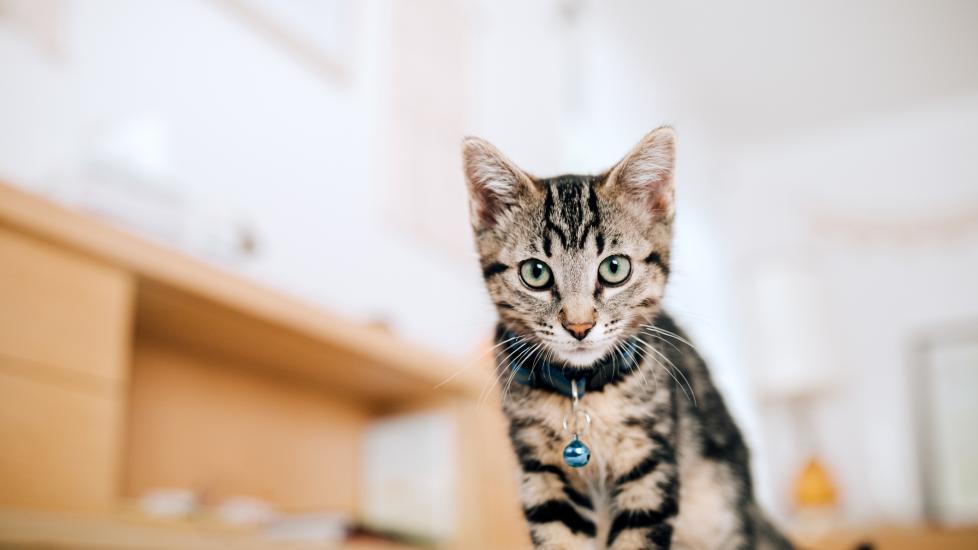6 Fun Facts About Your Cat’s Brain
Did you know that cat brains are smaller than they used to be? This doesn’t mean that our feline friends are less intelligent than their wild ancestors, just that their brains have adapted to living with us.
Some facts about feline brains are linked to how cats used to live, while others probably developed more recently as a result of domestication. In either case, knowing how cat brains do (and don’t) work can help you answer the questions that inevitably arise after watching your cat do something strange, like knocking over your cup of water (again).
1. Cats Understand Pointing
A study published in 2005 found that cats have the ability to understand human pointing when on the search for hidden food.
Why not turn this skill into a game? Hide some treats around the house. Start by getting close to the treat and pointing right at it. As your cat gets the hang of things, see if they can still figure out where you are pointing as you gradually move farther away from the treat. This is a great way to keep your cat mentally stimulated and engaged.
2. Cats Have Object Permanence
Object permanence is the understanding that even when something (or someone) isn’t in direct view, it still exists. This is a vital skill for cats who rely on their hunting skills for survival. Giving up on the hunt just because your prey disappeared behind a rock would obviously not be beneficial!
However, researchers disagree on the extent of a feline’s sense of object permanence. One paper found that cats could only understand the concept when they actually saw something disappear, but another study showed that cats could find an object even when they had not seen it hidden.
3. Cats Look to People for Social Cues (But Not as Much as Dogs)
Cats aren’t as social as dogs, but a 2015 study showed that they will look to their people for cues about how to react in a potentially dangerous situation. This is called social referencing.
Interestingly, cats did not use social referencing as much as dogs when trying to find hidden food. In this research, dogs routinely looked to their people for help, while cats continued to work through the problem on their own.
4. Cats Are About as Smart as a Human Toddler
Understanding object permanence, pointing, and social referencing are all important developmental milestones for human children. Of course, there’s normal individual variation, but most kids have at least a basic grasp on these concepts by the time they are around 1 year old. These are some of the reasons that people often say cats are about as smart as human toddlers.
5. Cats Have Variable Memories
Short-term and long-term memories serve different purposes. Short-term memories are generally relevant immediately (where a treat was hidden, for example) but aren’t useful for very long. Long-term memories can have repeat value far into the future (learning how to navigate a scary encounter with a dog, for example).
Research shows that cats’ short-term memory tends to fade pretty quickly (within 10 to 30 seconds or so) and their ability to find a hidden object completely disappears in 60 seconds.
Studies about long-term memory in cats are lacking. One paper showed that cats have good memories for up to 10 minutes or so, but experts agree there is anecdotal evidence that cats can remember important events and relationships for much longer.
6. Cats Have Some Concept of Time and Numbers
If you’ve ever been late feeding your cat a meal, it’s probably not too surprising to hear they have a good sense of time. But you might be astonished at just how good it is. One study found that cats could even discriminate between a five-second and an eight-second time interval.
And while it may be pushing things to say cats have an understanding of math, it appears they can differentiate between quantities of food. A paper published in 2008 found that cats could understand three is greater than two.
More recent research revealed that even kittens could differentiate between larger and smaller amounts of food—a skill that has obvious benefits when it comes to survival.
Featured Image: RyanJLane/iStock / Getty Images Plus via Getty Images
